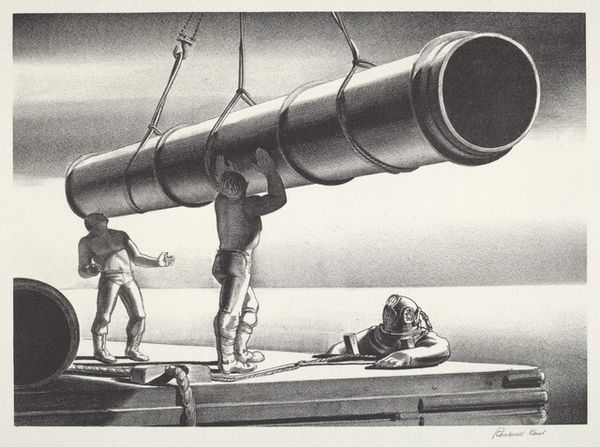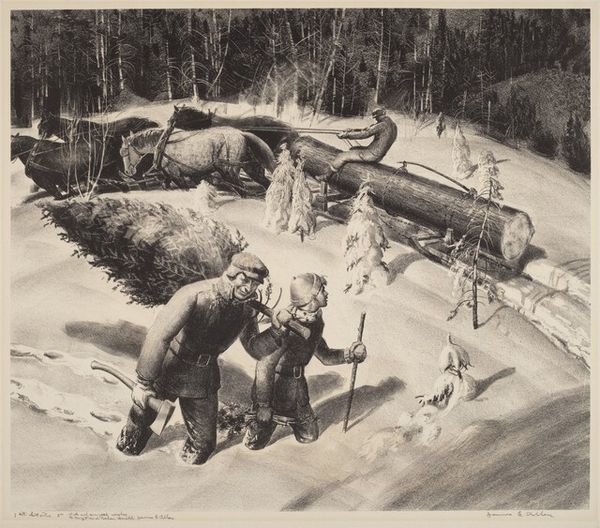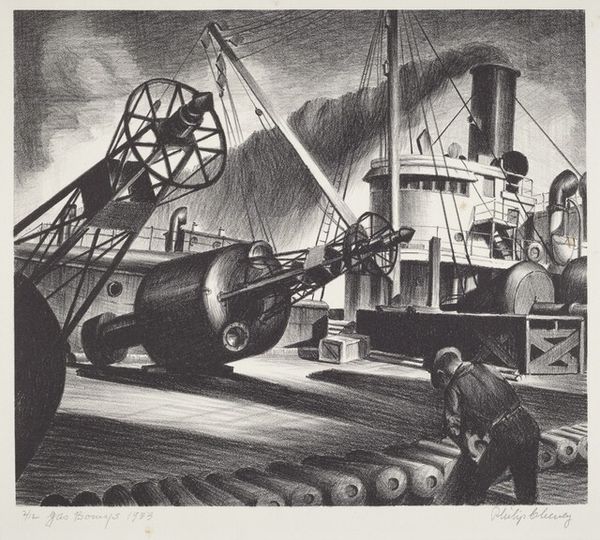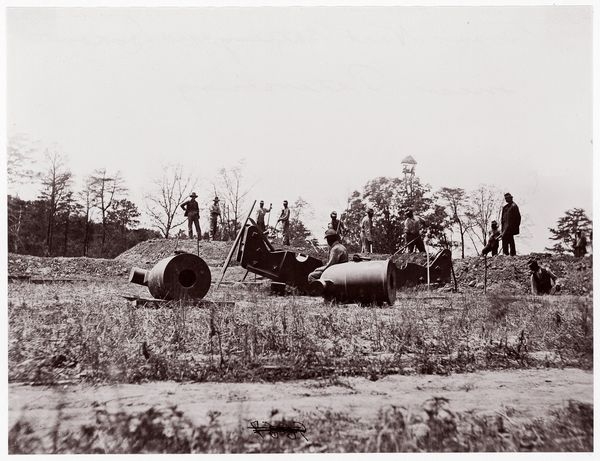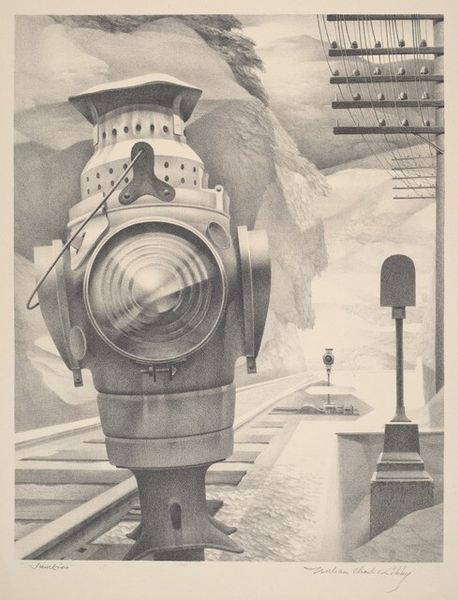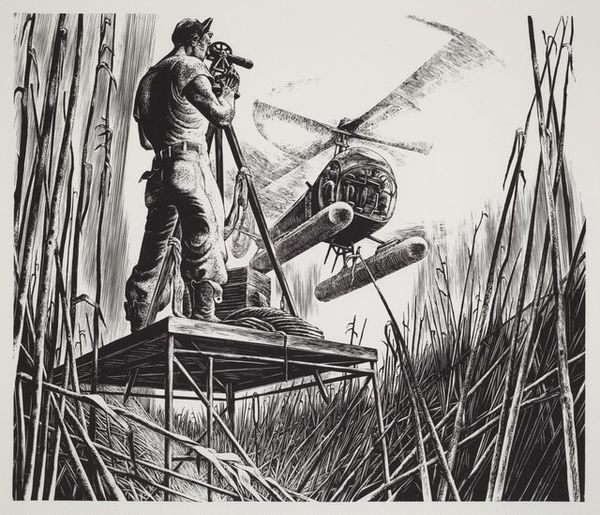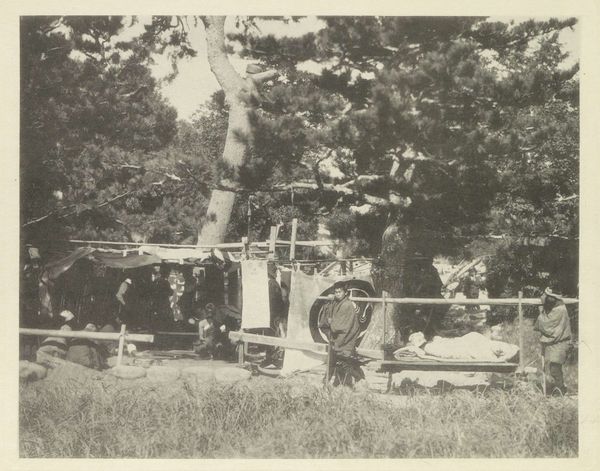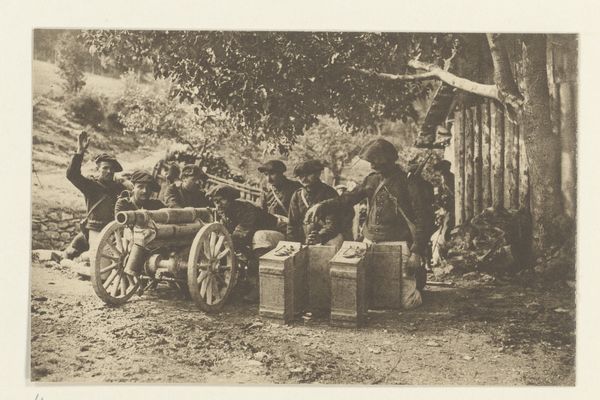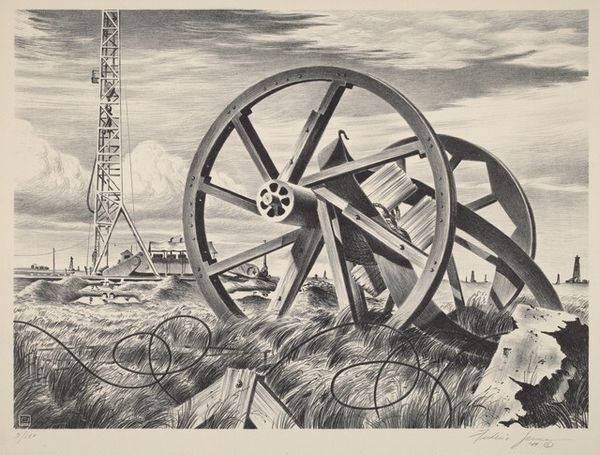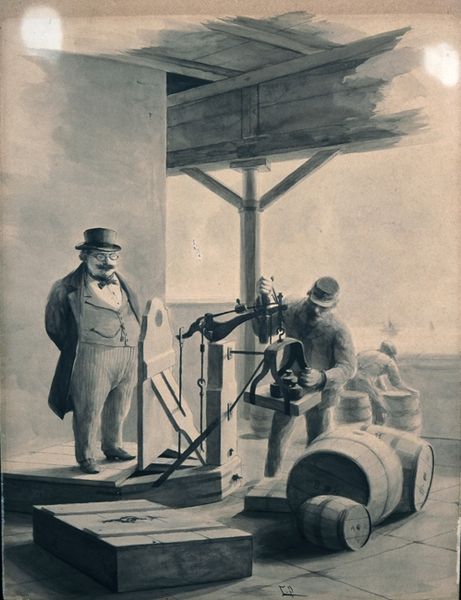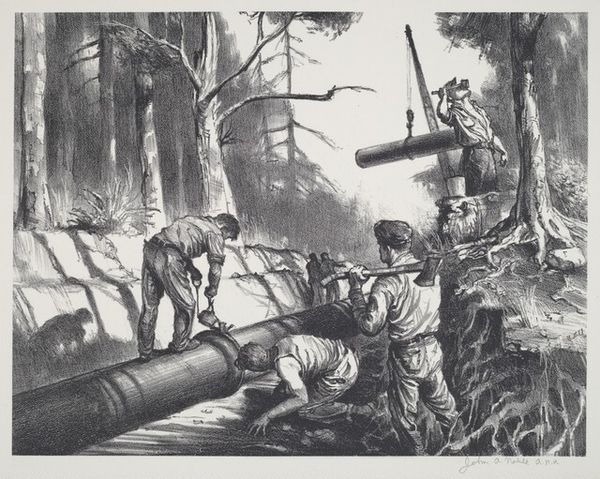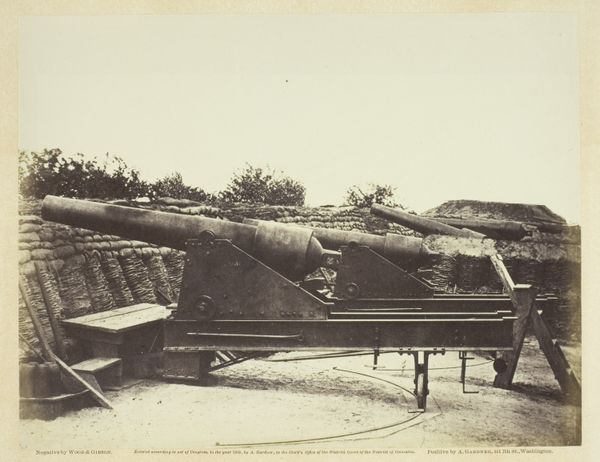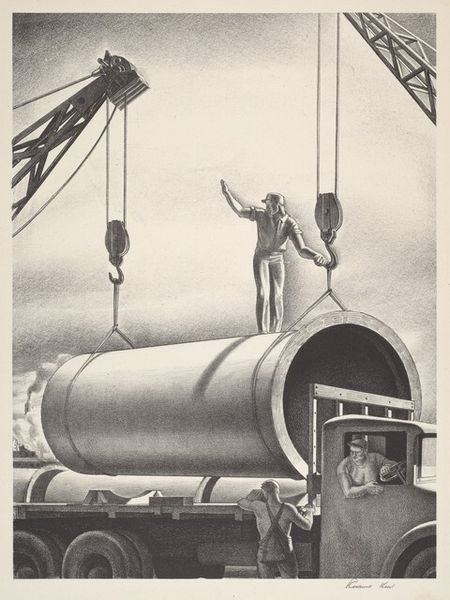
# print
#
landscape
#
caricature
#
surrealism
#
cityscape
#
genre-painting
#
history-painting
#
realism
Dimensions: image: 281 x 353 mm sheet: 328 x 422 mm
Copyright: National Gallery of Art: CC0 1.0
Editor: Here we have Edward Arthur Wilson’s print, *Untitled (Laying pipe in a New England town)* from 1945. The black and white imagery evokes a feeling of nostalgia, contrasting with the stark reality of the scene. What strikes you most about its visual construction? Curator: The image offers a captivating study in contrasts. Notice how Wilson orchestrates a play between light and shadow to articulate the forms. The heavy pipe is sharply rendered in great detail against the obscured pit below and the town behind, creating visual depth. Are you struck by that element too? Editor: Yes, I can see that now. The crispness of the machinery contrasts with the haziness of the background figures, giving the image dynamism and life despite its limited tonal range. What would you say is the most dominant compositional element? Curator: Undeniably the orthogonals—the converging lines created by the pipes, crane, and ditch. This forces our perspective deeper into the image. Furthermore, this technique is reinforced with the repetition of circular and vertical forms and balances the overall asymmetrical composition. It reveals a sophisticated approach to pictorial space. Editor: So, beyond the depiction of work, you are highlighting the underlying visual architecture that elevates this image? Curator: Precisely. Through compositional tools like line and value, Wilson’s artwork provides aesthetic engagement and thought. What did you gain through this close reading? Editor: I see the formal aspects much more clearly, which brings another dimension of meaning and detail I missed. Thank you.
Comments
No comments
Be the first to comment and join the conversation on the ultimate creative platform.
